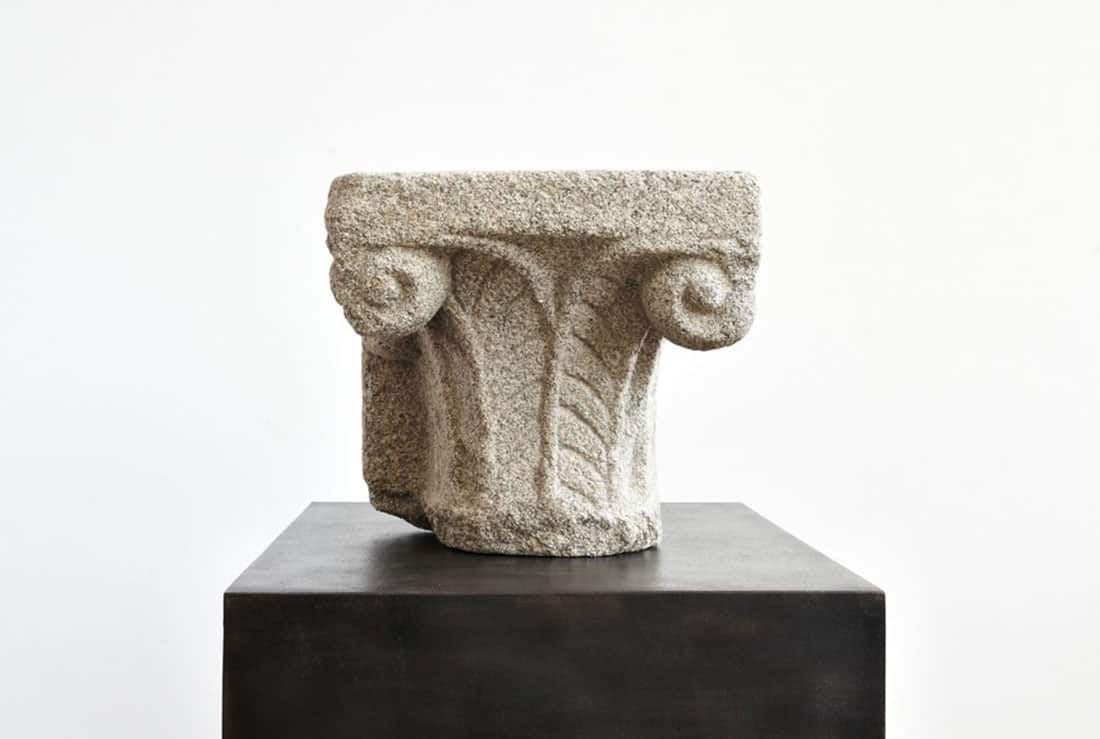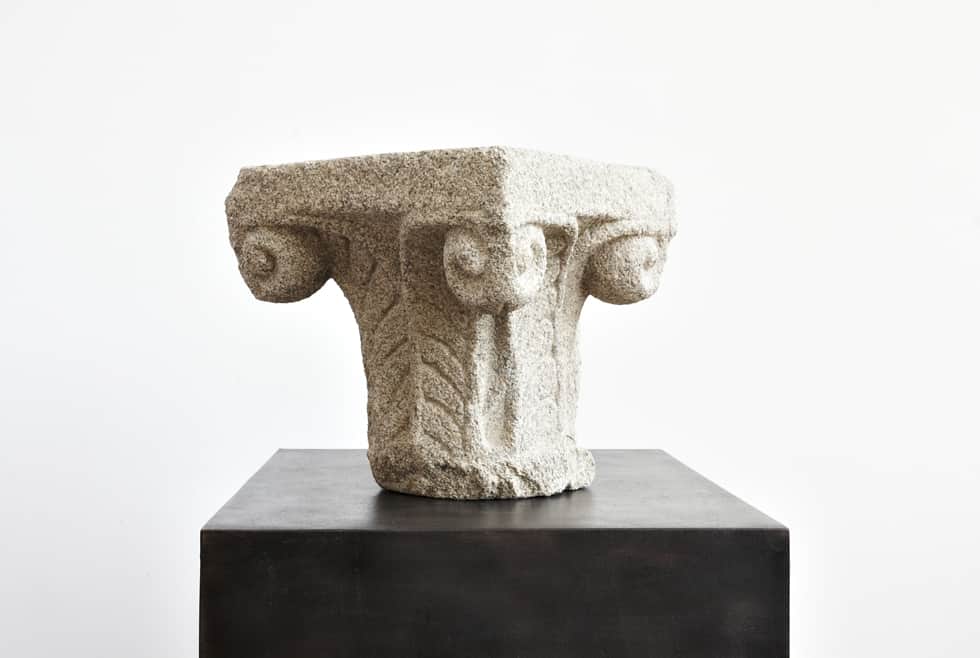CAPITAL ROMANESQUE
12-13th century

Old capitals
During the romanesque period , ca. 1000-1300, capitals followed roman examples, still to be seen in many antique structures. Old capitals were highly prized as antiques, collected and reused in romanesque architecture. New is the appearance of little creatures, humans and animals, hidden in the stylised acanthus foliage. Sometimes moving scenes from daily- or biblical life appear next to grotesque fantasy figures, referring to good and evil. The stone used for sculpting the capital (granite or limestone) is to some extent determinative for the stonemasons possibilities and result.
Unfinished
The pink granite corner capital is a stylized Romanesque version of the Roman Ionic and Corinthian capitals. The abstracted leaf (fern-like) curls at the corners in lobed volutes. The two unfinished sides betray the original position of the capital, in a stepped colonnade or on a corner pillar of a cloister or church.
Polychromy
Sometimes the capitals were partially or completely painted. Non-polychrome glints (mica) in the granite give an enchanting sparkle by candlelight.



CAPITAL ROMANESQUE
- Romanesque/Gothic
- 12-13th century
- Spain, Leon
- Granite
- H. 33 cm